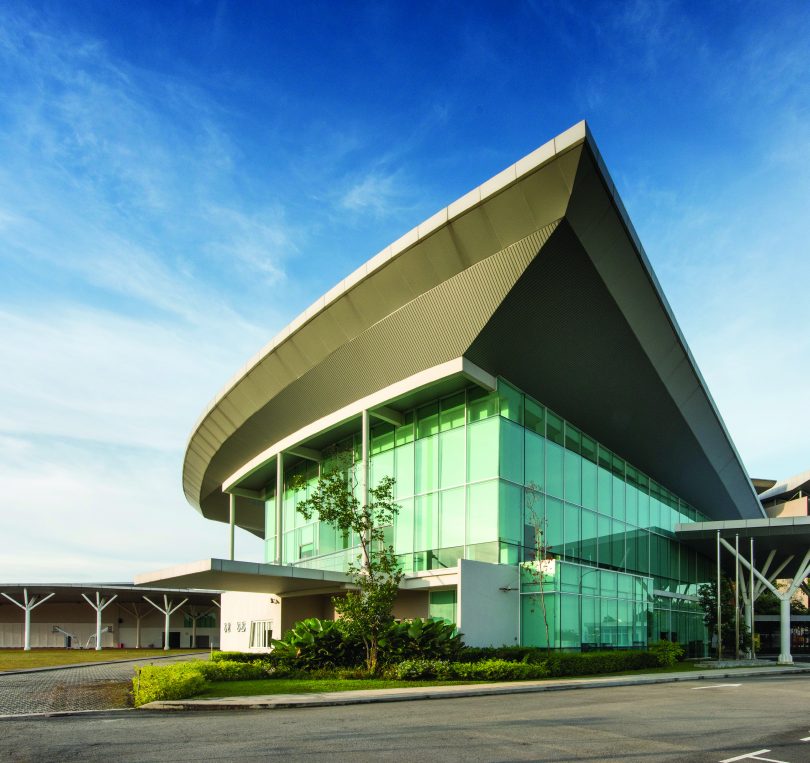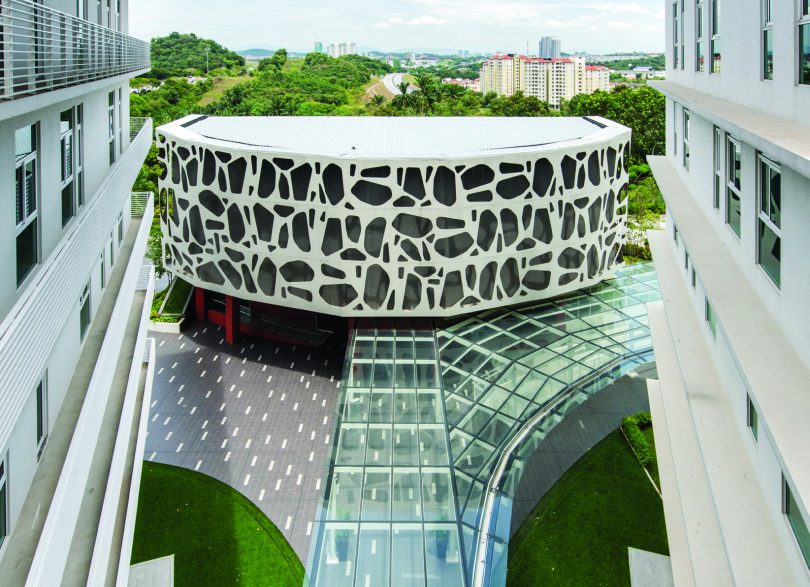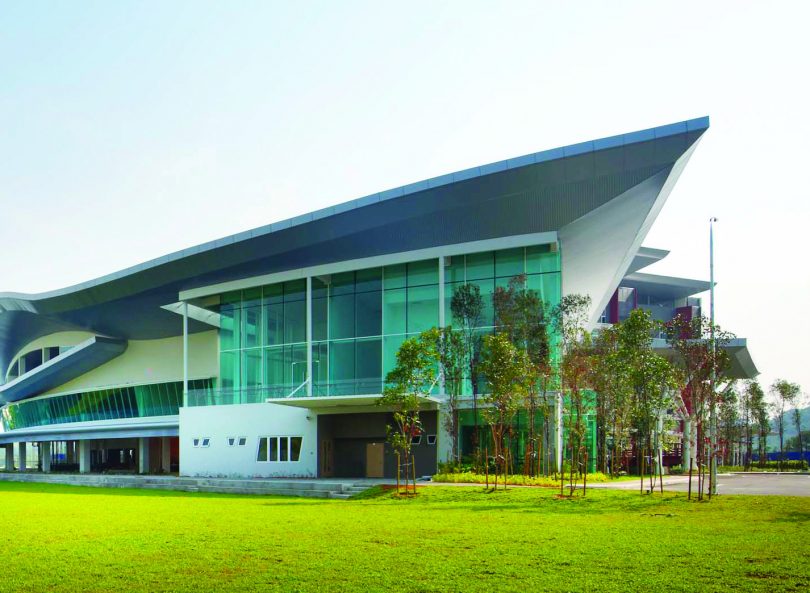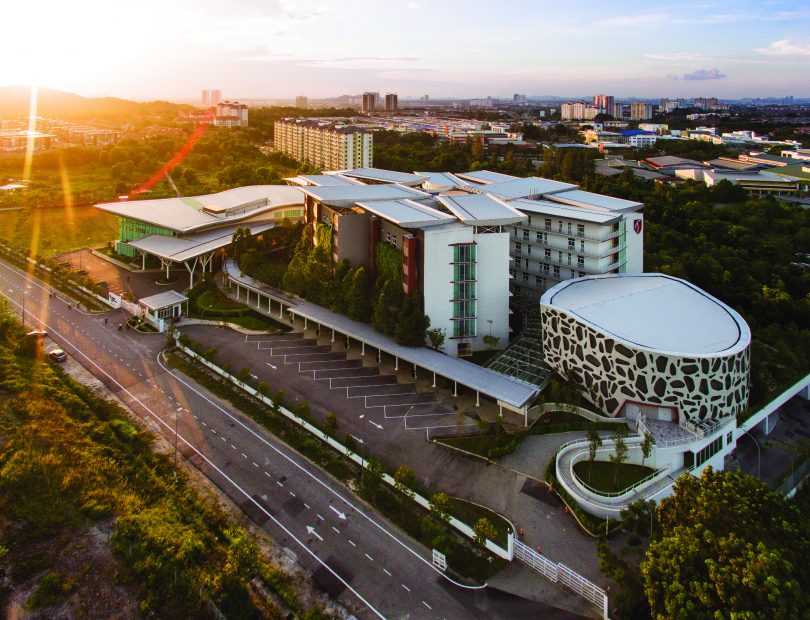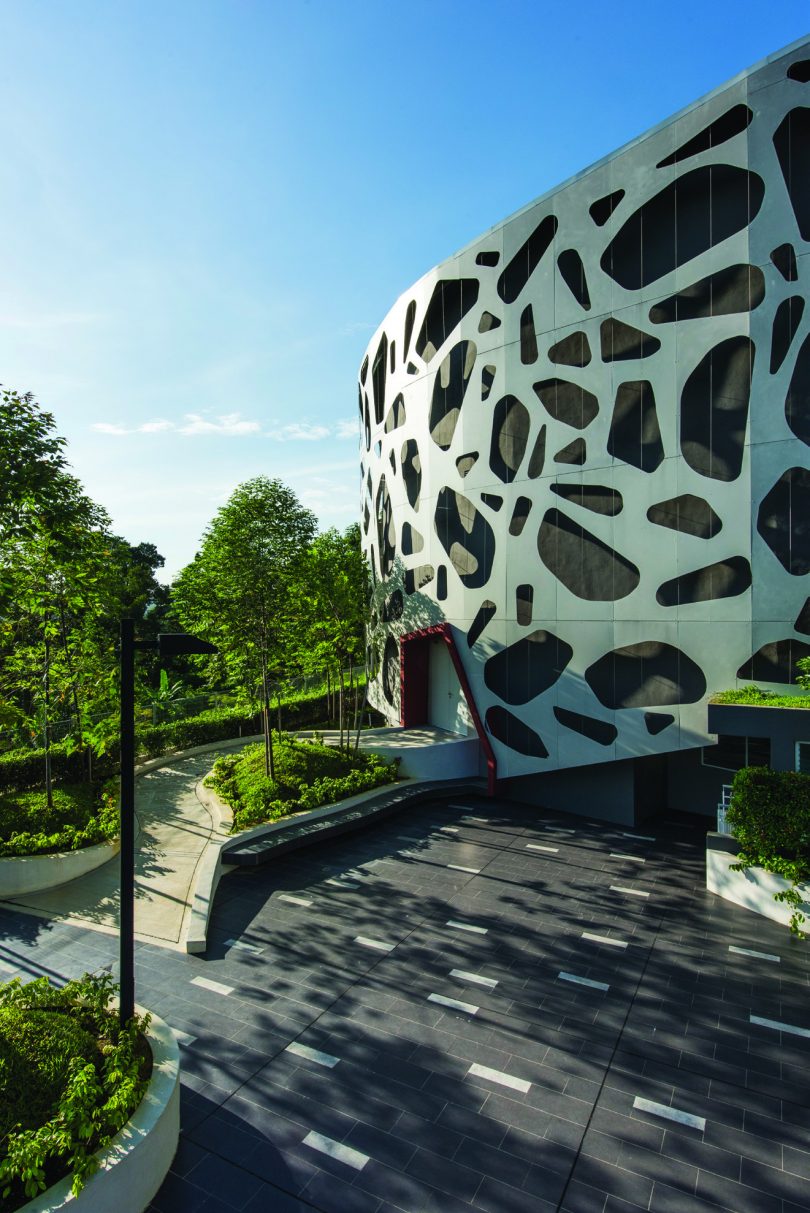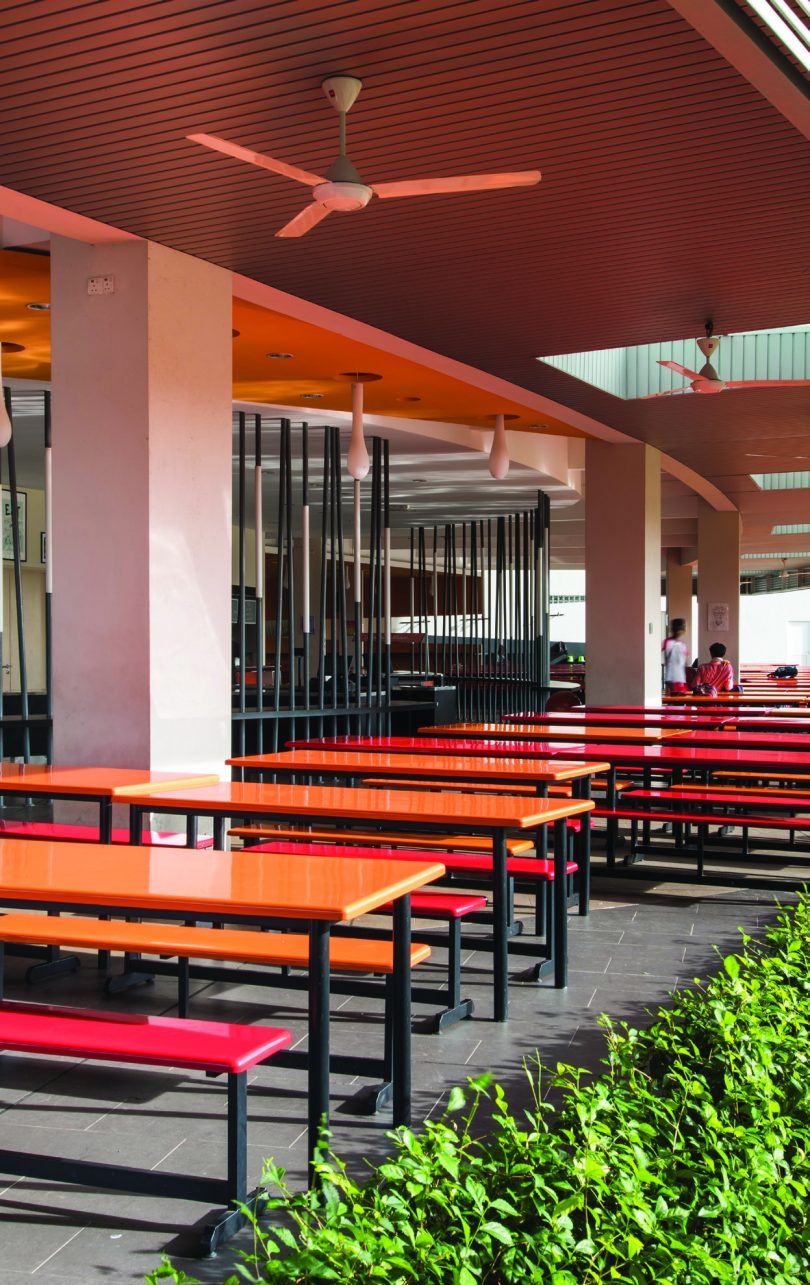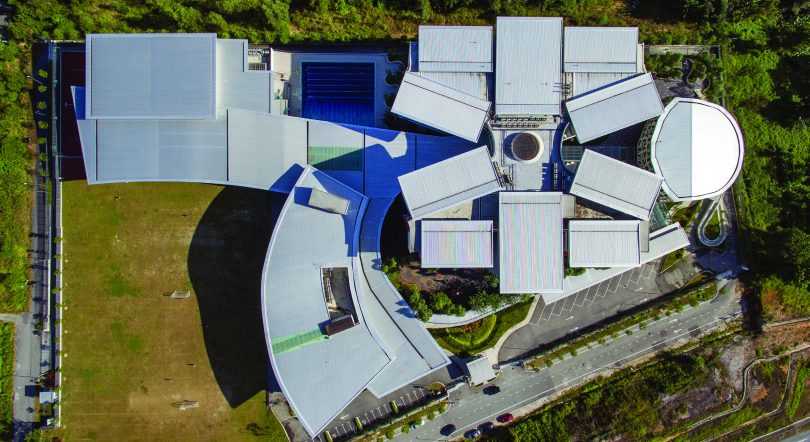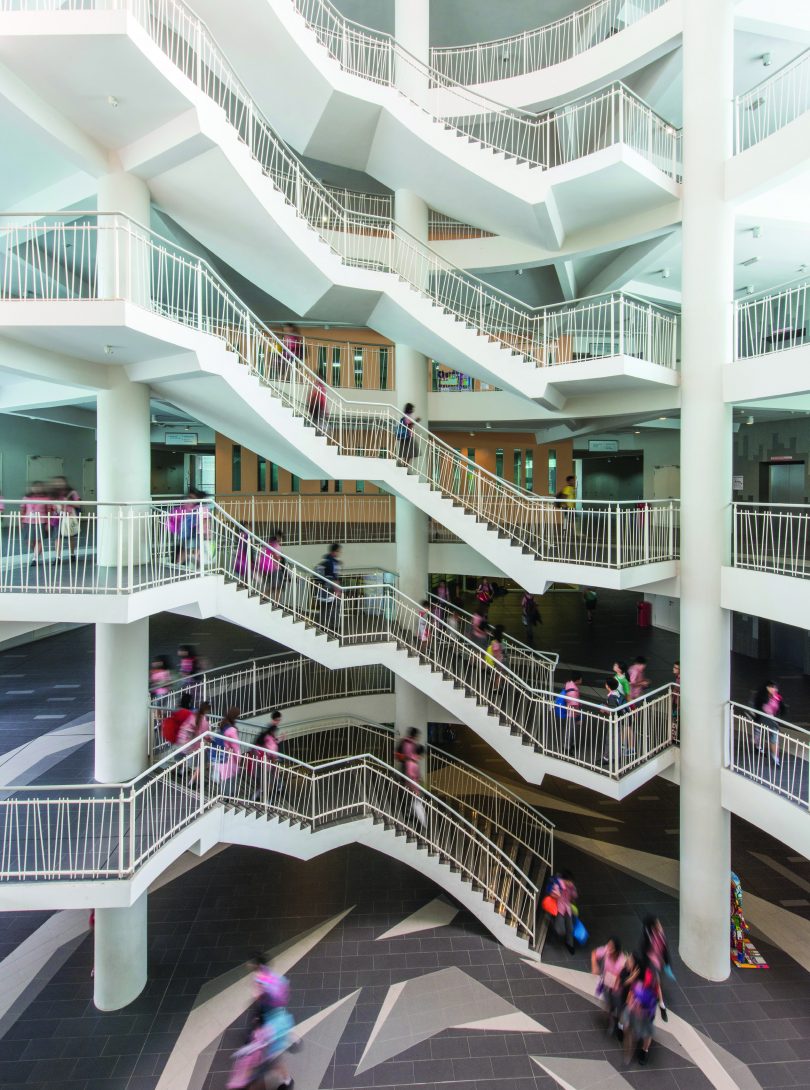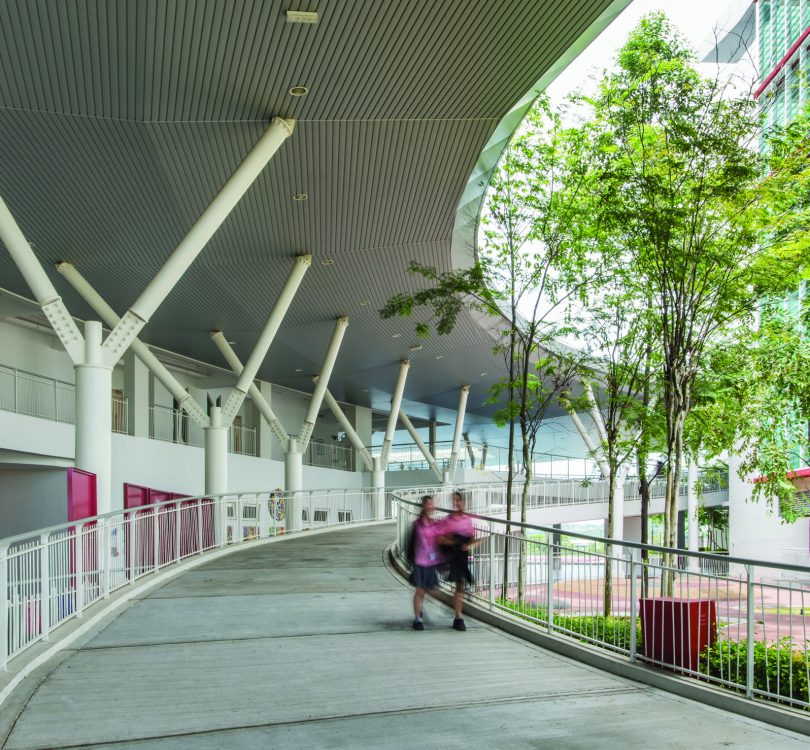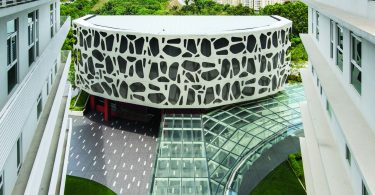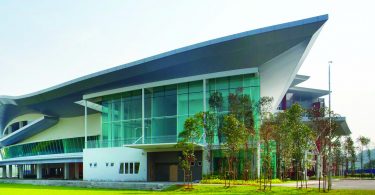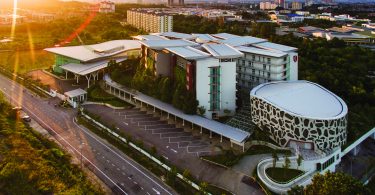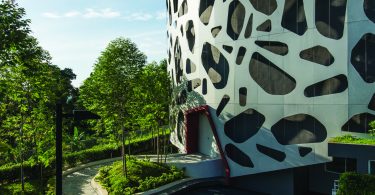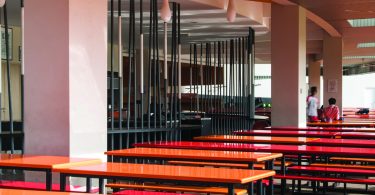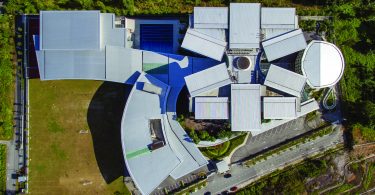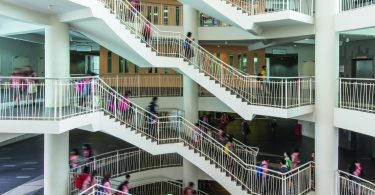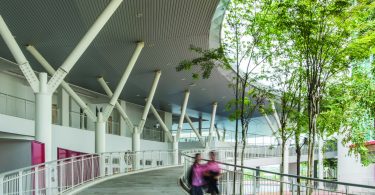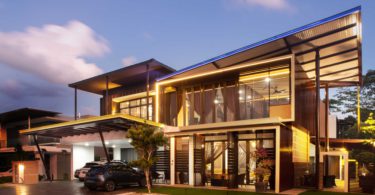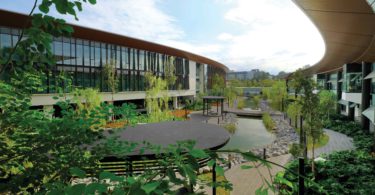The design theme for this project was east meets west. The client wanted to create a school that brings the best of two worlds, since the school fosters eastern values and cultures with western knowledge and creativity. The client seeks to provide an educational environment that will become the experiential foundation to a person’s life.
Located at Bandar Bukit Puchong 2, the site has direct access to the Lebuhraya Damansara- Puchong (LDP) and is within easy reach of Subang Jaya, Cyberjaya and Putrajaya. The campus can accommodate 1,500 students on a triangulated 6.8-acre site. The school was designed to cater to local students in Puchong, but the education programme is based on an international standard curriculum.
The campus is sited on an elevated land overlooking the LDP and fronting the South Klang Valley Expressway (SKVE) in a precinct on the edge of a township, with a dedicated access road that also connects to a public school, an apartment and gated communities.
SOCIAL SETTINGS
The campus uses an electronically controlled linear vehicular queueing system for traffic management, which reduces the long-term impact of traffic congestion on the neighbourhood. The system is a dedicated all-weather facility with three parallel line lanes to ensure quick and systematic pickup and drop-off at the arrival/ departure areas. The arrival/departure halls are comfortable waiting lobbies designated for the respective year groups.
There is also an electronic call system that allows parents to notify students upon arrival. The students transfer system is designed for efficiency and uninterrupted traffic flow solution to solve the traffic problem. The separation of traffic from the functioning area creates a fully pedestrianised campus. Buses are completely separated at ground level for quick turnarounds. All arrival/departure facilities are located within the campus’ boundary and property to maximise students’ safety and security.
ENVIRONMENTAL SETTINGS
The campus buildings were orientated on an east-west axis to minimise heat gain from the sun. The double tier roof shades the campus buildings to keep it cool throughout the day. The buildings were designed to be slim to maximise natural light, which eliminates the dependency on artificial lighting. The flowing roofs were designed for rainwater harvesting, which helps to conserve natural resources. Students will also be able to build a sense of awareness towards their surroundings and learn about their responsibilities towards the environment.
The campus utilises natural ventilation in over 50 per cent of the building spaces to negate the constant need for energy use. It uses a wind funnelling method by channelling natural airflow through a compressed space to create natural breeze, providing a comfortable outdoor environment. Greenery is intertwined within all physically built-up areas to blend nature and development together, such as green walls used as classroom shades, tree canopies for students to play underneath and herb garden areas for students to learn how to cultivate and nurture plants. These would also provide students with a chance to understand their roles as custodians of the environment.
MATERIALS
Due to availability and cost effectiveness, more than 60 per cent of the materials and resources were procured and produced locally. The external envelopes such as metal deck roofs, walls and renderings, as well as aluminium and glazing works were also locally produced. However, the components were made in neighbouring countries.
The auditorium features a second skin façade, which wraps around the auditorium with cut- outs of Voronoi patterns as an architectural expression that depicts the form as a point of celebration in learning. The façade is clad in off- white EQUITONE fibre cement panels that are joined to the wall by steel brackets and further supported by cables. A distinctive shadow effect is formed by the façade as the outline of the cut-outs creates depth and contrast on the grey wall. During night-time, LED lights light up from within the cavity to form a lively contrast on the auditorium’s façade, as the off-white fibre cement panel turns dark while the internal grey wall appears bright.
CHALLENGES AND CONSTRAINTS
The challenge for this project was to achieve an extraordinary architectural expression with an ordinary mid-level budget. The key architectural features are on the roof and façade, which were redesigned to fit the budget by constructing the same flowing curved metal roof with a standard straight flat profile. The design team fixed and made minor adjustments level at every bolting point over the length of the roof, hence eliminating the need for special pre-formed two- way curve sections and panels.
EQUITONE fibre cement panels were used to replace aluminium as the second skin façade of the auditorium. Standard steel support cables were used to achieve the oating sensation, which replaced the concealed bracketing system for the aluminium option. The material support replacement was extremely cost-effective as it reduced the material quantities required in a conventional method of construction signi cantly.
The academic block’s green façade was also constructed with a cost-effective method. The team adopted a simple cable stay system that allows creepers to climb up from the planter boxes at every 3 metres in order to achieve the overall effect.
PROJECT DATA
Project Name: Taylor’s International School Puchong
Location: Bandar Bukit Puchong 2, Puchong, Selangor, Malaysia
Completion Date: 25 March 2016
Site Area: 3.18 hectares (7.88 acres)
Gross Floor Area: 26,569.21 square metres (Phase 1); 10,443.92 square metres (Phase 2); 37,013.13 square metres (total)
Number of Rooms: 1 administration block; 1 multipurpose hall; 2 academic blocks (105 classrooms, 1 library, 20 laboratories, 4 art rooms, music rooms and dance rooms, 8 staff’s room and of ces); 1 auditorium and 1 swimming pool (including 1 sub-basement parking)
Building Height: 26.68 metres (highest building)
Client/Owner: Taylor’s Education Group (TEG) Assets Sdn Bhd
Architecture Firm: NWKA Architects Sdn Bhd
Principal Architect: Ar Ng Wai Keong
Interior Design Firm: Santa Fe Interior Architecture Sdn Bhd
Main Contractor: Pembinaan PURCON Sdn Bhd
Landscape Architect: Primeclass Landscaping Sdn Bhd
Mechanical & Electrical Engineer: Perunding Wepco Sdn Bhd
Civil & Structural Engineer: Dr Y G Tan Jurutera Perunding Sdn Bhd
Quantity Surveyor: Stanley Chin QS Consult
Suppliers: Hitchins (Malaysia) Sdn Bhd (waterproo ng); HENNER (autoclaved aerated concrete blocks); Antah Schindler Sdn Bhd (lifts); Feruni Ceramiche Sdn Bhd (tiles); DOE Industries Sdn Bhd ( ttings); Asuwaris Sdn Bhd (cubicles); Gayador Sdn Bhd (doors); SKB Capital Group (ceiling); SP.ace Products Sdn Bhd (acoustics); Ferco Seating Systems (M) Sdn Bhd (seating); Dextrous Enterprise Sdn Bhd (locks); Al Mazuma Sdn Bhd; EQUITONE (panels)
Images/Photos: David Yeow Photography

 Hong Kong
Hong Kong Singapore
Singapore Indonesia
Indonesia Tiếng Việt
Tiếng Việt ประเทศไทย
ประเทศไทย

